- Home
- Andy McNab
Last Light Page 2
Last Light Read online
Page 2
While in the Army I had spent two years as a sniper, in a Royal
Green Jacket rifle company. I was as keen as anything: it had something to do with being left alone just to get on with it with your sniper partner. I learnt a lot and was a good shot, but I didn't have the passion required to make it a life's vocation.
I was still staring at the three bulbs, waiting for One and Three to sign in. A helicopter clattered overhead, following the river-bank on the north side, and I had to look up to satisfy myself that it wasn't looking for me. My paranoia was working overtime. For a moment I thought that it had found the explosive device I'd placed on the roof of the Royal Horseguards Hotel in Whitehall the night before. The hotel was just out of sight, behind the MoD (Ministry of Defence) main building across the river to my half right. Seeing the three service flags fluttering on the roof of the massive light-coloured stone cube prompted me to check something else for the millionth time.
Keeping the row of torch bulbs in my peripheral vision, I looked down at the river to check the wind indicators.
In urban areas the wind can move in different directions, at different levels, and in different strengths, depending on the buildings it has to get around.
Sometimes streets become wind tunnels, redirecting and momentarily strengthening the gusts. Indicators were therefore needed at different levels round the killing area, so the snipers could compensate by adjusting their sights. The wind can make an immense difference to where a round hits because it simply blows it off course.
Flags are really useful, and there were more around here than at a UN summit. On the water there were plenty of boats moored with pennants at the stern. Higher up, on both ends of Westminster Bridge, there were the tourist stalls, selling plastic Union Jacks and Man United streamers. The snipers would use all of these, and they would know where to look because I'd keyed them on to the maps supplied in the DLB. The wind condition at river level was good, just a hint of a breeze.
My eyes caught movement in the killing ground. I felt my face flush and my heart rate quicken. Shit, this shouldn't be kicking off yet.
I had a grandstand view of the terrace, and the times-twelve magnification of the binos made me feel as if I was almost standing on it. I checked it out with one eye on the binos, the other ready to pick up any flashes from the torch bulbs.
A feeling of relief flooded through me. Catering staff. They were streaming in and out of the covered pavilions to the left of the killing ground, busy in their black and white uniforms, laying out ashtrays and placing bowls of nuts and nibbles on square wooden tables. A stressed-looking older guy in a grey, double-breasted suit stalked around behind them, waving his arms like a conductor at the Last Night of the Proms.
I followed the line of the terrace and spotted a photographer on one of the wooden benches. He had two cameras by his side and smoked contentedly as he watched the commotion, a big smile on his face.
I went back to the conductor. He looked up at Big Ben, checked his watch, then clapped his hands. He was as worried about the deadline as I was. At least the weather was on our side. Taking the shot through one of the pavilion windows would have made things even more difficult than they already were.
The three sniper positions were all on my side of the river; three Portakabins in the grounds of St. Thomas's Hospital, directly opposite the killing ground.
Three different positions gave three different angles of fire, and therefore three different chances of getting a round into the target.
The distance between the first and third sniper was about ninety metres, and they'd be shooting over a distance of between 330 and 380 metres, depending on their position in the line-up. Being one floor up, the killing ground was below them, at an angle of about forty-five degrees. It would be just good enough to see the target from the stomach up if it was sitting down, and from about thigh up when standing, since a stone wall about a metre high ran the length of the terrace to stop MPs and peers falling into the Thames when they'd had a drink or two.
The riverbank in front of their positions was tree-lined, which provided some cover, but also obstructed their line of sight into the killing ground. These things are nearly always a matter of compromise; there is rarely a perfect option.
This would be the first time the snipers had ever been to the fire position, and it would also be the last. Soon after the shoot they'd be heading for Paris, Lille or Brussels on Eurostar trains, which left from Waterloo Station just ten minutes' walk away. They'd be knocking back a celebratory glass of wine in the Channel tunnel well before the full extent of what they'd done had dawned on Special Branch and the news networks.
TWO
Once I'd satisfied myself that the only activity in the killing ground came from harassed catering staff, I got back to watching the three bulbs. Snipers One and Three should have signed on by now. I was well past concerned, and not too far short of worried.
I thought about Sniper Two. She would have moved cautiously into the fire position after clearing her route, employing the same tradecraft as at the DLB, and probably in a simple disguise. A wig, coat and sunglasses do more than people think, even if SB racked up hundreds of man hours poring over footage from hospital security, traffic and urban CCTV cameras.
Having first put on her surgical gloves, she would have made entry to her Portakabin with the key provided, closed the door, locked up, and shoved two grey rubber wedges a third of the way down and a third up the frame to prevent anyone entering, even with a key. Then, before moving anywhere, she'd have opened the sports bag and begun to put on her work clothes, a set of light blue, hooded and footed coveralls for paint spraying from B&Q. It was imperative that she didn't contaminate the area or the weapon and equipment that were going to be left behind with fibres of her clothing or other personal sign. Her mouth would now be covered by a protective mask to prevent leaving even a pinprick of saliva on the weapon as she took aim. I was pleased with the masks: they'd been on special offer.
The coveralls and gloves were also there to protect clothes and skin. If she was apprehended immediately after the shoot, residue from the round that she'd fired would be detectable on her skin and clothes. That's why suspects' hands are bagged in plastic. I was also wearing surgical gloves, but just as a normal precaution. I was determined to leave nothing, and disturb nothing too.
Once she'd got covered up, with just her eyes exposed, she'd be looking like a forensic scientist at a crime scene. It would then have been time to prepare the fire position. Unlike me, she needed to be away from the window, so she'd have dragged the desk about three metres clear. Then she'd have pinned a net curtain into the plasterboard ceiling, letting it fall in front of the desk before pinning it tight to the legs.
Next, she'd have pinned up the sheet of opaque black material behind her, letting it hang to the floor. As with the netting, I had cut it to size for each fire position after the CTR. The combination of a net curtain in front and a dark backdrop behind creates the illusion of a room in shadow. It meant that anyone looking through the window wouldn't see a fat rifle muzzle being pointed at them by a scarily dressed woman. Both sets of optics that she'd be using, the binos and the weapon sight, could easily penetrate the netting, so it wouldn't affect her ability to make the shot.
Some fifteen minutes after arriving, she'd be sitting in the green, nylon-padded swivel chair behind the desk. Her takedown weapon would be assembled and supported on the desk by the bipod attached to the forward stock. Her binos, mounted on a mini-tripod, would also be on the desk, and in front of her would be her plastic lunch-box. With the weapon butt in her shoulder, she would have confirmed the arcs of fire, making sure she could move the weapon on its bipod to cover all of the killing ground without being obstructed by the window-frame or trees. She'd generally sort herself out and tune into her environment, maybe even dry practise on one of the catering staff as they rushed around the terrace.
One of the most important things she would have done before signing
on with me was check her muzzle clearance. A sniper's optic sight is mounted on top of the weapon. At very short ranges the muzzle may be three or four inches below the image the sniper can actually see through the sight. It would be a total fuck-up if she fired a round after getting a good sight picture and it didn't even clear the room, hitting the wall or the bottom of the window-frame instead.
To deaden the sound of the shot, each weapon was fitted with a suppressor. This had the drawback of making the front third of the barrel nearly twice the size of the rest of it, altering its natural balance by making it top heavy. The suppressor wouldn't stop the bullet's supersonic crack, but that didn't matter because the noise would be down-range and well away from the fire position, and covered anyway by the device going off; what it would stop was the weapon's signature being heard by hospital staff or Italian tourists eating their overpriced ice cream on the embankment just a few feet below.
The Portakabin's windows had to be slid open. Firing through glass would not only alert the tourists, but would also affect the bullet's accuracy. There was a risk that someone might think it unusual for the window to be open on a Sunday, but we had no choice. As it was, the suppressor alone would degrade the round's accuracy and power, which was why we needed supersonic rounds to make the distance. Subsonic ammunition, which would eliminate the crack, just wouldn't make it.
It would only be once she was happy with her fire position, and had checked that her commercial hearing-aid was still in place under her hood, that she would sign on. Her box of tricks didn't have lights, just a green wire antenna that would probably be laid along the desk then run along the floor. A copper coil inside the box emitted three low touch tones; when I hit my send press el they picked that up through the hearing-aid.
There was one other wire coming out of the box, leading to a flat, black plastic button; this would now be taped on to the weapon wherever she had her support hand in position to fire.
Hitting the press el five times, once she was ready to go, was what lit up my number-two bulb five times.
There was nothing left for her to do now but sit perfectly still,
weapon rested, naturally aligned towards the killing area, observe, wait, and maybe listen to the comings and goings just below her. With luck the other two were going to be doing the same very soon. If anyone from hospital security attempted to be the good guy and close her window, a woman dressed like an extra from the X-Files would be the last thing they ever saw as she dragged them inside.
It was only now that she was in position that her problems really began. Once she'd zeroed the weapon in Thetford Forest, it would have been carried as if it was fine china. The slightest knock could upset the optic sight and wreck the weapon's zero. Even a tiny misalignment could affect the round by nearly an inch, and that would be bad news.
And it wasn't just the possibility of the optic being knocked, or the suppressor affecting the round's trajectory. The weapon itself, issued to me by the Yes Man, was 'take down'. So, once she had zeroed it for that one, all-important shot, it had to be taken apart for concealment, before being reassembled at the firing point.
Thankfully this bolt-action model only had to be split in two at the barrel, and because they were brand new, they wouldn't have suffered that much wear and tear on the bearing surfaces. But there only had to be a slight difference in the assembly from when it was zeroed, a knock to the optic sight in transit, for the weapon to be inches off where she was aiming.
This isn't a problem when an ordinary rifleman is firing at a body mass at close range, but these boys and girls were going for a catastrophic brain shot, one single round into the brain stem or neural motor strips. The target drops like liquid and there is no chance of survival. And that meant they had to aim at either of two specific spots the tip of an earlobe, or the skin between the nostrils.
She and the other two would need to be the most boring and religious snipers on earth to do that with these weapons. The Yes Man hadn't listened. It annoyed me severely that he knew jack shit about how things worked on the ground, and yet had been the one who decided which kit to use.
I tried to calm down by making myself remember it wasn't entirely his fault.
There had to be a trade-off between concealment and accuracy, because you can't just wander the streets with a fishing-rod case or the world's longest flowerbox. But fuck it, I'd despised him when he was running the support cell, and now it was worse.
I looked through the window at the distant black and white figures moving around the killing ground, and wondered if the Brit who'd first played about with a telescopic sight on a musket in the seventeenth century ever realized what drama he was bringing to the world.
I checked out the area with my binos, using just one eye so I didn't miss One or Three signing in. The binos were tripodded because twelve-times magnification at this distance was so strong that the slightest judder would make it seem like I was watching The Blair Witch Project.
Things had moved on. The staff were still being hassled by the grey-suited catering bully. As guests came through the grand arched door on to the terrace, they'd now be greeted by trestle tables covered by brilliant white tablecloths.
Silver trays of fluted glasses waited to be filled as corks were pulled from bottles of champagne.
Things would be kicking off soon, and all I had was one sniper. Not good; not good at all.
I refocused the binos on the arched doorway, then went back to watching the lights, willing them to spark up. There was nothing else I could do.
I tried and failed to reassure myself that the co-ordination plan for the shoot was so beautifully simple, it would work with only one sniper.
The snipers had the same binos as mine and would also have them focused on the door. They'd want to ID the Yes Man the moment he walked into the killing area, and they'd use binos first because they give a field of view of about ten metres, which would make it easier to follow him through the crowd until he made the target ID. Once that was done, they would switch to their weapon's optic sight, and I would concentrate on the lights.
The method I was going to use to control the snipers and tell them when to fire had been inspired by a wildlife documentary I'd seen on TV. Four Indian game wardens, working as a team in total silence, had managed to stalk and fire sedative darts into an albino tiger from very close range.
Whenever any of the snipers had a sight picture of the target and felt confident about taking the shot, they'd hit their press el and keep it pressed. The corresponding bulb in front of me would stay lit for as long as they could take the shot. If they lost their sight picture, they released their press el and the bulb would go out until they acquired it again.
Once I'd made the decision when to fire, I'd push my send press el three times in a one-second rhythm.
The first press would tell the firer or firers to stop breathing so their body movement didn't affect the aim.
The second would tell them to take up the first pressure on the trigger, so as not to jerk the weapon when they fired.
As I hit the press el the second time, I'd also trigger the detonation. The third time, the snipers would fire as the device exploded on the roof of the hotel. If all three were up and the target was sitting, that would be perfect but it rarely happens that way.
The device would not only disguise the sonic cracks, but create a diversion on the north side of the river while we extracted. I just wished the MoD building wasn't closed for the weekend: I'd have loved to see their faces as the blast took out a few of their windows. Never mind, with luck it would make the Life Guards' horses on Whitehall throw off their mounts.
None of the snipers would know if the others had the target. The first time they'd know the option was going ahead was when they heard the three tones in their ear. If they didn't have a sight picture themselves, they wouldn't take a shot.
After the explosion, whether they'd fired a round or not, they would all exit from their positions, stripping off their oute
r layer of coveralls and leaving the area casually and professionally with the protective clothing in their bag.
The rest of the kit, and the weapons, would be discovered at some point by the police, but that wouldn't matter to me as I'd handed it over sterile. It shouldn't matter to these people either, as they ought to be professional enough to leave it in the same condition as they'd received it. If they didn't, that was their problem.
I rubbed my eyes.
Another light flashed.
Sniper One was in position, ready to go.
I hit the send press el three times, and after a short pause Sniper One's bulb flashed three times in return.
I was feeling a little better now, with two snipers sitting perfectly still, watching and waiting as they continued to tune into the killing ground. I could only hope that Sniper Three was close behind.
THREE
Big Ben struck half past the hour. Thirty minutes to go.
I continued to stare at the box, trying to transmit positive thoughts. The job was going to happen with or without Sniper Three, but what with the weapon problems, three chances of a hit were better than two.
My positive transmissions weren't working at all, and after ten minutes or so my eyes were drawn to the killing ground again. Things were happening. Different colours of clothing were moving amongst the black and white of the catering staff like fragments in a kaleidoscope. Shit, they were early.
I put one eye to the binos and checked them out, just as One and Two would be doing. The new arrivals seemed to be the advance party, maybe ten suited men, all of them white. I checked that the Yes Man wasn't amongst them and had fucked up his own plan. He wasn't. He would have fitted in nicely, though: they didn't really seem to know what to do with themselves, so decided to mill around the door like sheep, drinking champagne and mumbling to each other, probably about how pissed off they were to be working on a Sunday. Dark, double-breasted suits with a polyester mix seemed to be the order of the day. I could see the well worn shine and lard-arse creases up the backs of the jackets even from here. The jackets were mostly undone because of the weather or pot bellies, revealing ties that hung either too high or too low.

 Get Me Out of Here!
Get Me Out of Here! Battle Lines
Battle Lines Whatever It Takes
Whatever It Takes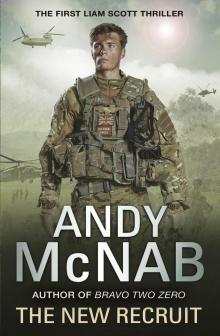 The New Recruit
The New Recruit War Torn
War Torn Brute Force
Brute Force Crossfire
Crossfire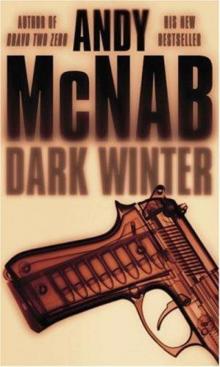 Dark Winter ns-6
Dark Winter ns-6 The Grey Man
The Grey Man Spoken from the Front
Spoken from the Front Meltdown
Meltdown Recoil
Recoil Nick Stone 1 - Remote Control.
Nick Stone 1 - Remote Control. Last Light ns-4
Last Light ns-4 Liberation day
Liberation day Deep Black
Deep Black Street Soldier
Street Soldier Dead Centre ns-14
Dead Centre ns-14 Exit wound ns-12
Exit wound ns-12 Silent Weapon
Silent Weapon Bravo two zero
Bravo two zero Crisis Four ns-2
Crisis Four ns-2 Red Notice
Red Notice NS13 Zero Hour
NS13 Zero Hour Firewall
Firewall Last Light
Last Light Aggressor
Aggressor Seven Troop
Seven Troop Meltdown bs-4
Meltdown bs-4 The Grey Man (quick reads)
The Grey Man (quick reads) The New Enemy
The New Enemy Avenger
Avenger FireWall ns-3
FireWall ns-3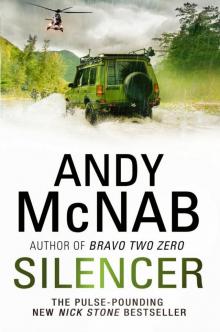 Silencer
Silencer Last Night-Another Soldier…
Last Night-Another Soldier… Line of Fire:
Line of Fire: Detonator
Detonator Deep Black ns-7
Deep Black ns-7 Zero Hour (2010) ns-13
Zero Hour (2010) ns-13 Brute Force ns-11
Brute Force ns-11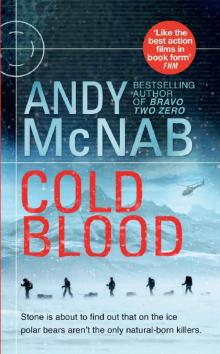 Cold Blood
Cold Blood Terminal Velocity
Terminal Velocity Avenger bs-3
Avenger bs-3 Battlefield 3: The Russian
Battlefield 3: The Russian DropZone
DropZone Zero Hour
Zero Hour NS13 Zero Hour (2010)
NS13 Zero Hour (2010) Boy soldier bs-1
Boy soldier bs-1 State Of Emergency: (Tom Buckingham Thriller 3)
State Of Emergency: (Tom Buckingham Thriller 3) Immediate Action
Immediate Action The New Patrol
The New Patrol Crisis Four
Crisis Four Boy Soldier
Boy Soldier Payback bs-2
Payback bs-2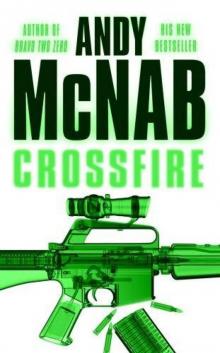 Crossfire ns-10
Crossfire ns-10 Today Everything Changes: Quick Read
Today Everything Changes: Quick Read Dead Centre
Dead Centre For Valour
For Valour Liberation Day ns-5
Liberation Day ns-5 Aggressor ns-8
Aggressor ns-8 Remote Control ns-1
Remote Control ns-1 Fortress
Fortress On the Rock
On the Rock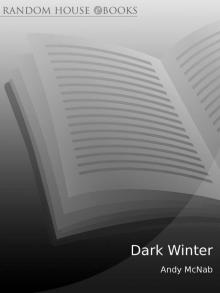 Dark Winter
Dark Winter